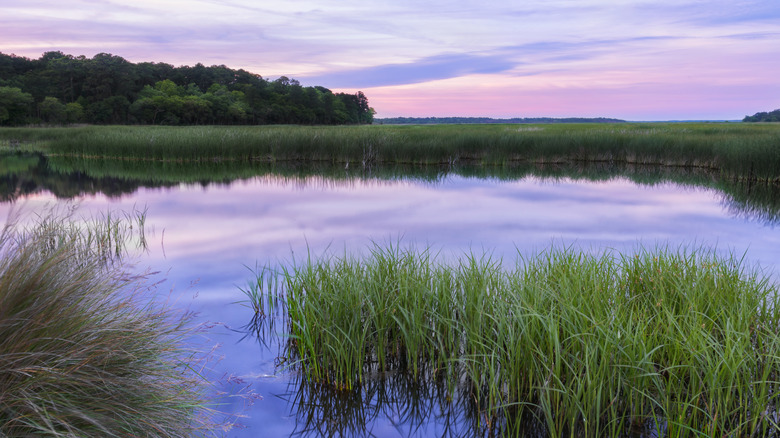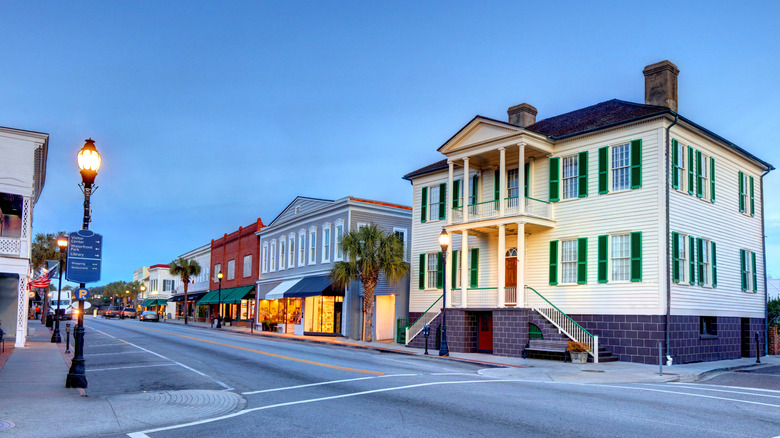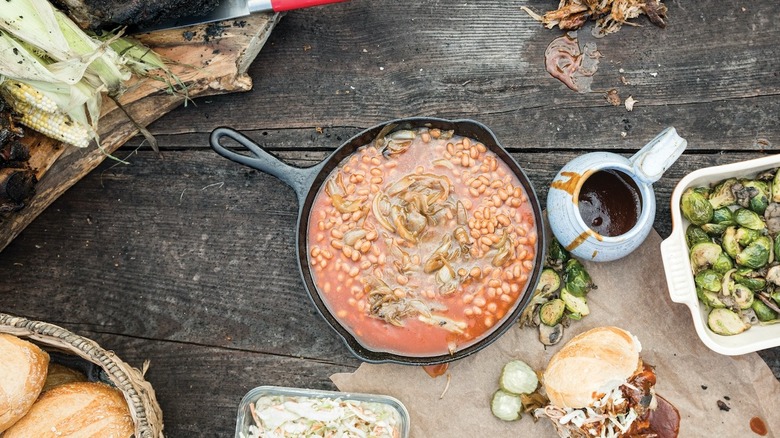South Carolina's Lowcountry Is The Most Soulful Coastline With Cute Towns And Destination-Worthy Cuisine
The Lowcountry is the flat, marshy coastal area between Charleston and Savannah, including the little seaside towns along the way, like Beaufort, home to history and romance. Outside a few major cities, the Lowcountry centers mostly around smaller communities and barrier islands. It's a world of winding saltwater creeks, flowing grasses teeming with birdlife, and dolphins fishing along the mudflats.
But it's also a place deeply ingrained in Black Southern history. Charleston was the largest slave port in the U.S. during the 1800s. When plantation owners fled the area during the Civil War, enslaved people harvested the rice, cotton, and indigo for themselves. Over the years, they turned more to seafood, like oysters and shrimp. Insulated by the winding marshes of the Lowcountry, these communities developed a unique culture, including language and food.
The Gullah Geechee are descendants of enslaved Africans brought to the New World. In the Lowcountry and sea islands of South Carolina and Georgia, surrounded by winding tidal rivers and Spanish-moss-draped oak trees, the Gullah were less influenced than many other communities, holding onto their West and Central African roots. And the towns along this stretch of coast are the perfect place to take a short road trip, insulate yourself from the rest of the real world, and taste some fantastic food.
The Gullah Geechee and Lowcountry culture
There's no denying that, as unique coastal escapes go, it's hard to beat the Lowcountry. With its bucolic salt marsh vistas and expansive sandy beaches, you can't go wrong if your goal is to find a slower pace. However, the area's history and culture add another dimension to the beautiful surroundings. Recently, tourists have been drawn here to sample the unique Gullah Geechee cuisine. With a heavy serving of the area's staple fresh seafood, the food here tells a story of the African diaspora. Rice and grains take starring roles, with cooking methods that blend African, European, and Early American, handed down over generations.
Finding authentic Gullah dishes in the Lowcountry is a fun challenge — with so much interest, local restaurants are popping up all over the region. There are under-the-radar locals spots, plus chic hotspots in the big cities like Savannah and Charleston, popular with its striking Southern charm. The adventurous sampling and comparing is half the fun of a road trip through the region.
To learn more about the region's heritage, there are a few places to include on your trip through the area. One is the International African American Museum in Charleston, which includes exhibits about the Gullah Geechee and the "unvarnished stories of the African American experience across generations." Another is the Bluffton Gullah Cultural Heritage Center, a new facility with exhibits and interactive experiences around the area. Finally, consider taking the ferry to tiny Daufuskie Island, where the Gullah Heritage Tour can show you one of the most remote communities.
Exploring the Lowcountry on your own
The Lowcountry sits on a section of South Carolina's coast dotted with small towns. The major cities are Charleston and Savannah, on the north and south ends, respectively. If you're flying in, there are more flights into Charleston International than Savannah Hilton Head International. Still, both are good options for departing on a road trip along the coast. It's only about a two-hour drive from Charleston to Bluffton, near Savannah, along U.S. Highway 17 — but that doesn't include stops. You'll want to leave plenty of time to visit museums, take hikes, go on boat rides, and have fine meals. There are many side trips, barrier island beaches to see, and dishes to sample.
The climate here is hot and humid in the middle of summer, but winters are cool and mild. Depending on how you want to fill your days, you can find the perfect getaway nearly any time of year. Most people will agree that avoiding the extremes is best, meaning the optimal time of year to visit falls in spring or autumn. The months around April and October are the best times to visit.
With such a large geographic area to explore and a wide variety of towns and escapes to pick from, finding accommodations for the entire trip is a challenge. Your best bet to soak up the local culture is to plan stops at the most interesting towns, finding small inns and bed and breakfasts in each that allow you to explore the area on foot. After a night or two, hop in your car and move on to the next, making a road trip that covers some ground while rejuvenating. At a minimum, be sure to spend time in Charleston, Beaufort, and Bluffton, a friendly and vibrant foodie town.


